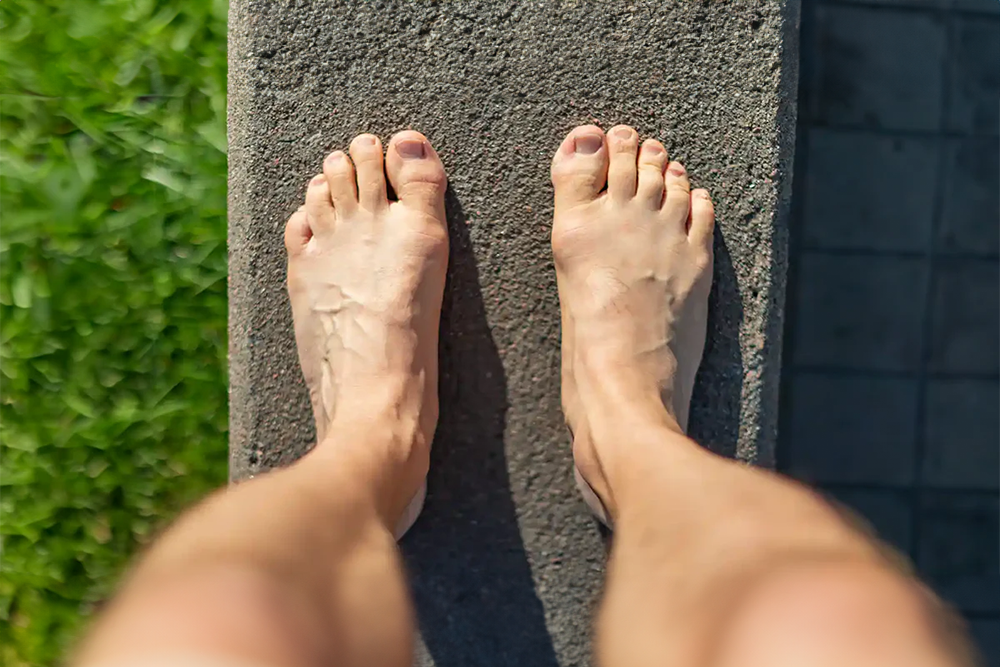WHAT IS A WIDE FOOT?
A wide foot is defined by a broader width than normal across the foot’s sole. This characteristic can complicate shoe selection because wide feet require a wider fit to ensure optimal comfort. People with wide feet may experience issues such as friction, blisters, or discomfort from ill-fitting shoes. Choosing footwear specially designed for wide feet can help improve comfort and prevent foot problems.
WHAT CAUSES A WIDE FOOT?
Several factors can contribute to having wide feet, including:
Genetics
Low foot arch
Flat feet
Swelling
Age
Pregnancy
It’s important to note that wide feet can result from a combination of these factors. Consulting a healthcare professional can help identify specific causes in each case and develop an appropriate treatment plan.
HOW DO I KNOW IF I HAVE WIDE FEET?
To determine if you have wide feet, you can assess the width by making an imprint on paper or consulting a shoe size chart. When trying on shoes, ensure they feel comfortable and do not exert excessive pressure on the sides.
If you regularly experience discomfort with standard shoes, seeking professional advice from a podiatrist or visiting a specialty store can provide an accurate evaluation and recommendations tailored to your foot width.
A specialized healthcare provider, such as a podiatrist or orthotic specialist, can take foot impressions during a podiatric evaluation. This process helps analyze the structure of your feet—whether they are high-arched, flat, or standard-shaped. If necessary, this specialist can design custom orthopedic insoles tailored to your needs, which can be integrated into orthopedic footwear.
WHAT HEALTH ISSUES ARE ASSOCIATED WITH WIDE FEET?
Wide feet can lead to issues such as discomfort, friction, and difficulty finding suitable footwear, potentially resulting in blisters, calluses, and foot deformities.
Conditions like hallux valgus, tendonitis, or joint pain can also be exacerbated. It’s essential to choose appropriate shoes to prevent these problems and maintain foot health. Professional consultation can offer personalized advice.
INSUFFICIENT VEIN CIRCULATION Swelling of the foot may result from insufficient vein circulation, a condition where veins struggle to return blood from the legs to the heart. This can lead to fluid buildup in tissues, causing edema.
HEART CONDITIONS Heart failure can weaken the heart’s ability to pump blood effectively. This condition can result in fluid retention in the legs and feet, leading to swelling.
KIDNEY CONDITIONS Kidney problems can cause water retention in the body, often manifesting as swelling in the feet and ankles.
LIVER CONDITIONS Liver diseases can disrupt fluid balance in the body, leading to water retention and swelling in the feet.
LYMPHATIC SYSTEM PROBLEMS Lymphedema, characterized by a buildup of lymphatic fluid, can cause swelling in the feet. This is often associated with obstruction or abnormalities in the lymphatic system.
JOINT AND BONE ISSUES Conditions like arthritis, osteoarthritis, or other problems affecting the foot’s joints or bones can lead to swelling.
DISCOVERING ORTHOPEDIC SHOES HOW TO RELIEVE PAIN ASSOCIATED WITH WIDE FEET?
To alleviate pain associated with wide feet, consider several strategies:
Avoid narrow shoes: Steer clear of shoes that are too narrow, as they can compress the feet and worsen pain. Opt for shoes that offer ample toe room. Apply cold compresses: If inflammation or pain occurs, apply cold compresses to the affected area to reduce swelling and relieve pain. Elevate your feet: Elevate your feet as much as possible, especially after a day of standing. This can help reduce fluid accumulation and alleviate pressure. Stretching exercises: Perform foot stretching exercises to strengthen muscles and improve flexibility. This can help relieve tension and reduce pain. Use orthopedic insoles: Wearing orthopedic insoles provides better stability and increased cushioning. These custom-made foot orthoses can be crafted by a podiatrist or orthotic specialist. Wear orthopedic shoes: Wearing shoes with special features can make walking more comfortable. Often, wearing properly fitted orthopedic shoes helps alleviate pain associated with high arches. Also, consult our tips for choosing shoes suitable for wide feet.
HOW TO TREAT WIDE FEET?
To treat wide feet, choose well-fitting shoes with rounded toes, avoiding overly narrow designs. Use padded insoles, perform stretching exercises, and maintain good hygiene. If persistent pain occurs, consult a healthcare professional for personalized advice, including options for custom orthoses.

